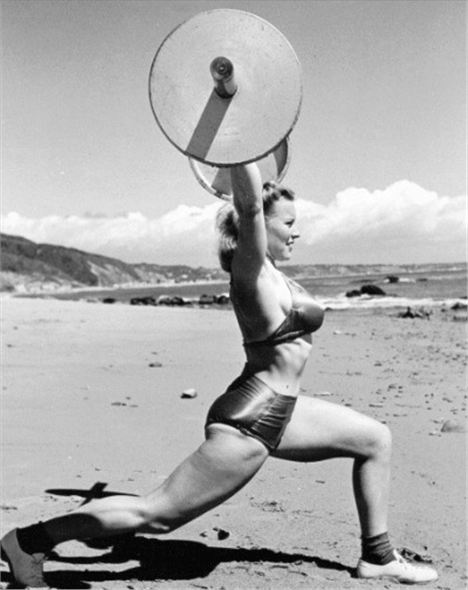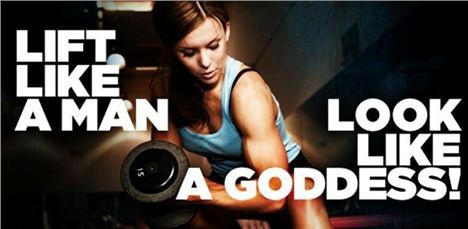ANYONE who has ever checked out a gym's free weights area knows that not all men are bulky. Of course, some are, but not all.
Medically, if I wanted to look like a man, I’d have to inject myself with male hormones and even that wouldn’t work, unless I took additional steroids and stripped my body fat down.
Those who are big will have spent the past couple of years following strict weight training routines and diet plans, aimed specifically for muscle gain. But building that kind of muscle is a die-hard commitment most people simply don't have.
That’s why women who avoid the weight training area, because they're scared of bulking up, couldn't be more wrong.
I don't judge them, of course.
As a semi-professional wrestler, I've spent the past ten years working out in the weights room and some of the comments I've heard would put any woman off: "Weights aren’t for women"; "Women who think they can lift heavy weights are disgusting"; or (the funniest) "It's not natural to hear women grunt and shout".
And, sadly, men aren't the only skeptics when it comes to weight-lifting women.
A column written by Tara Parker-Pope in the October issue of New York Times magazine and headlined ‘Why Women Can’t Do Pull-Ups’, stated that because women don't have the same testosterone levels as men they can't possibly execute pull-ups - an exercise where you grab a raised bar above your head and pull up your own bodyweight.
The scientific proof for this conclusion was from a study which actively tried to strengthen women's back muscles over a set period of time. By the end of the test, only 4 of the 17 women could do a pull-up.
There was one obvious problem with the study, however.
The women didn't actually practice pull-ups. Anyone - man or woman - who's ever mastered this exercise knows you need to practice pull-ups to be able to do them.
Aside from such ignorance, the most common statement I hear is "Don't lift too heavy. You don't want to end up looking like a man, do you?".
Medically, if I wanted to look like a man, I’d have to inject myself with male hormones and even that wouldn’t work, unless I took additional steroids and stripped my body fat down. The good news is weight training just doesn't produce those kind of body changes in women.
If you don’t believe me, listen to the science.
Women have about eight times less plasma concentration of testosterone compared to men, and because men have a greater metabolic consumption of the hormone, their production is 20 times greater than women. And despite that level of testosterone, most men still struggle to gain just a couple of pounds of muscle mass.
Try to imagine the magnitude of work women would have to put in to get bulky.
Of course, like men, women who lift weights will experience increased testosterone production. That’s purely a good and healthy thing. In fact, insufficient levels of the hormone can be harmful, even for women. Studies have shown that testosterone helps preventing decreased bone density and osteoporosis, which are a common risk, especially for aging women.
For example, at menopause, the female body can produce as much as 50 percent less testosterone than it did during peak production. A deficiency has also been shown to negatively affect women’s sexual health, as well as mood, with lower sex drive and depression being some of potential consequences.
And even if you go to extremes, I've met professional female weightlifters and believe me, they look nothing like men.
I've also seen female bodybuilders and besides not at all looking like any man that I know, they certainly don't look like they've only spent two to three hours a week following a healthy strength and diet regimen.
So, not only is it completely in order for women to do weights, it’s necessary. It benefits your body in ways no other training does. You’ll probably be amazed by how quickly your body turns stronger and more athletic.
Best of all, it’s not that complicated. There’s no need to know how to isolate your biceps or gluteal muscles. Start big, simple and not too heavy.
Do a set of squats, then deadlifts and pull-downs, for about twelve repetitions each. Repeat the sets two to three times. Do the workout two to three times a week for the first couple of weeks.
In case you struggle, or have any further queries, don’t be scared to ask a fitness instructor (or use Youtube). And please don’t hesitate to get in touch with me on sjodintraining@gmail.com. Nothing makes me happier than seeing more women jump on the weights bandwagon.





